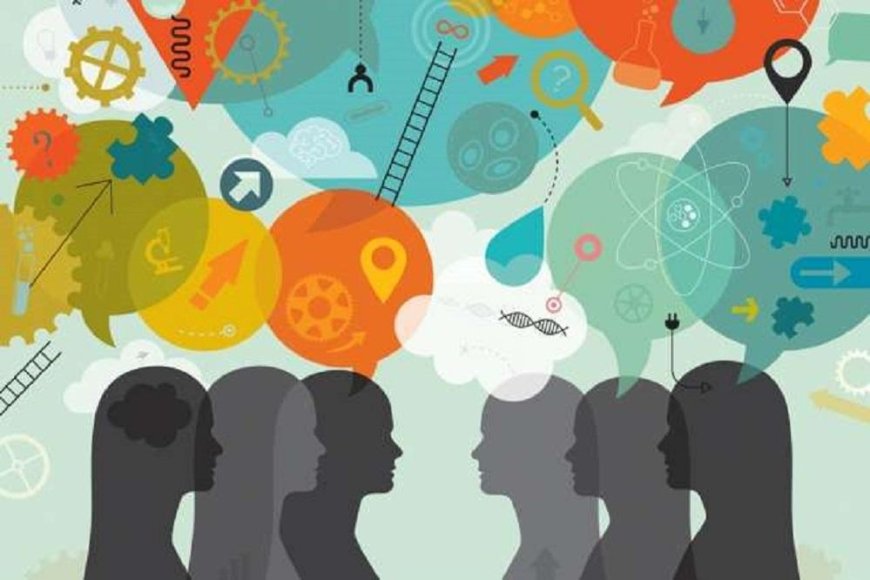Group dynamics for teenagers
Group dynamics for teenagers is an extremely useful tool to help them grow and mature, and to improve communication with each other.

Group dynamics for teenagers is an extremely useful tool to help them grow and mature, and to improve communication with each other.
Adolescence is a time of great changes that are essential on the way to adulthood. In today's article, we take a close look at the interesting subject of adolescent group dynamics and how it can help them grow.
To understand how group dynamics affect adolescents, we first need to understand the concepts of puberty and adolescence and the basic differences between them.
On the one hand, puberty is a series of biological, physical, morphological, hormonal and psychosexual changes. They are designed to transform the body of an infant and later a child into the body of an adult capable of reproducing.
On the other hand, adolescence is the process of going from childhood to adulthood over a period of several years. This is the stage where a number of the most important changes take place.
These are not only the factors mentioned above, but also numerous intellectual, psychological and social aspects. It is on these factors that group dynamics for teenagers are built.
Overall, Group Dynamics for teens is an extremely useful tool to help them grow and mature, and to improve communication with each other.
What is group dynamics anyway?
Group dynamics refers to structured methods or procedures that are designed to organize a group of people and develop them as individuals.
Overall, group dynamics is a very motivating technique that, when used in a typical group situation, stimulates the group and helps them learn on several different levels. This means that as a result, the people covered by it work on their potential and develop their effectiveness.
In this way, a group working with that particular dynamic can achieve its goals and be more productive. In addition, it can achieve greater coherence and a better sense of teamwork.
Group dynamics for teenagers
Group dynamics for teenagers can be useful in schools as well as in any other institution, youth organization, association or center. It is important to ensure that the specific dynamics used will achieve the goals associated with each group of teenagers and their specific characteristics. So it must have a specific goal.
In addition, other factors including social, financial, cultural and institutional factors must be taken into account. Overall, group dynamics for teenagers should be aimed at developing effective learning in every area. Its purpose should be to aid reflection and the maturation process in general.
This method of stimulation should be related to aspects such as:
- Socialization
- Creativity
- Communication
- Self-Esteem
- Responsibility
- Autonomy
- Solving the conflict
- Participation and teamwork
- Expression
- Managing emotions
Must Read: TECNO astounds everyone with the successful Photowalk to Khunjerab Pass
Different types of group dynamics
Today there is a wide variety of group dynamics for teenagers, classified according to their own purpose. They can also vary widely in characteristics, duration, activities and complexity.
Above all, there is a group dynamic that aims to "break the first ice". In these specific activities, members of a given group introduce themselves to each other and get to know each other better.
For example, there is a group dynamics named "Starting Point." In this exercise, each member of this group introduces himself by answering a shortlist of topics, including questions such as name, favorite color, skills, disadvantages and limitations and advantages in their lives.
We also find another dynamic that aims to reflect communication within groups. Many of them try to discover what problems and factors can cause conflicts and how to solve them. Various specific dynamics such as "Broken phone" or "Sociogram" are useful in this topic.
On the other hand, there are also other dedicated dynamics, such as a brainstorming session or a symposium. They help to divide tasks and responsibilities in order to achieve better organization and consensus in a given group.
There is also a group dynamic for teenagers that aim to resolve conflicts and change their behavior.
One example is the group dynamics known as "Six Thinking Hats", invented by Edward de Bono. But there are other types of role play as well. These dynamics work on aspects such as empathy, putting yourself in the place of others, and considering different perspectives to solve a specific problem or situation.
A few words to summarize
Any group dynamic for teenagers will always be very positive as it helps to develop learning related to social, moral and axiological behaviors and attitudes. These are the basic concepts to achieve normal teen evolution and maturity.
In short, it is necessary to create situations in which young people can reflect on their behavior and its consequences.
